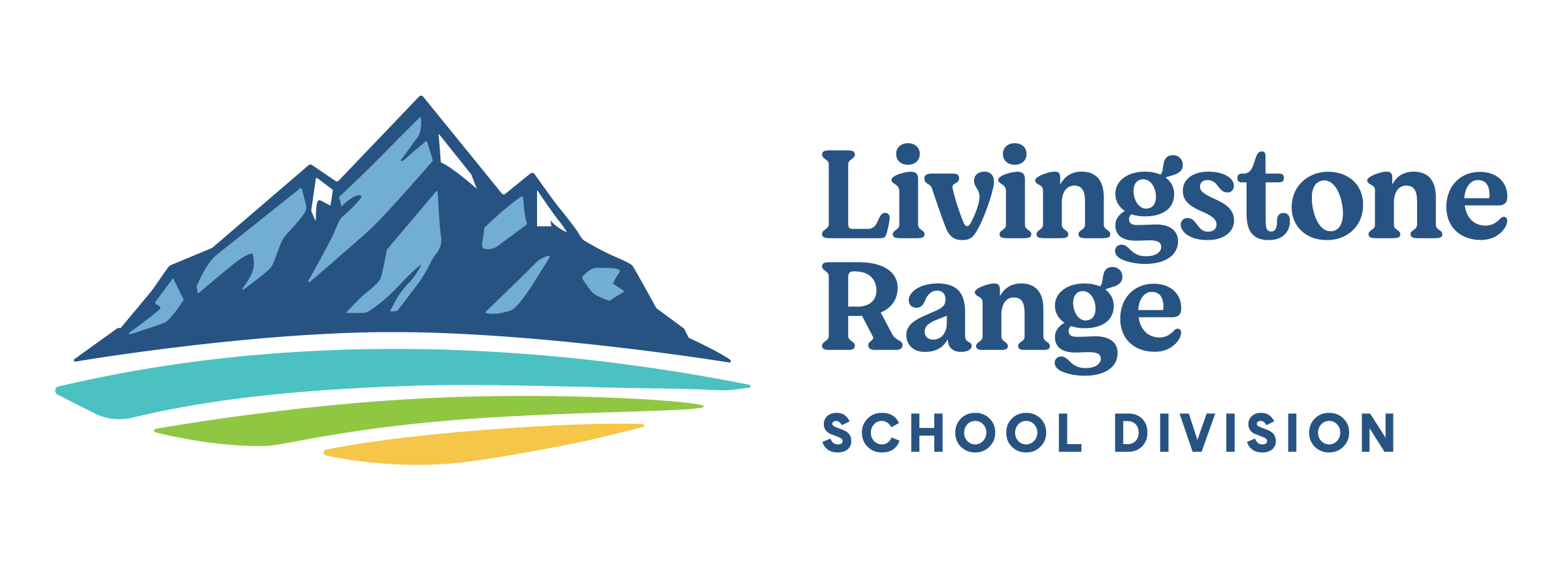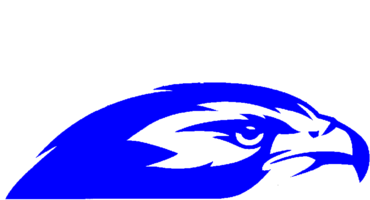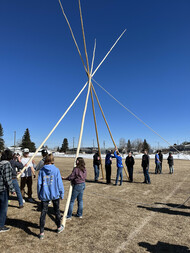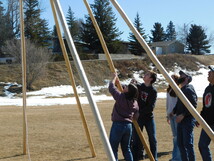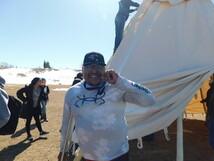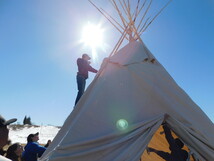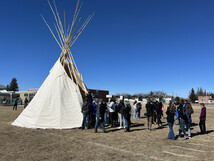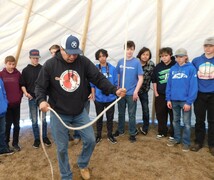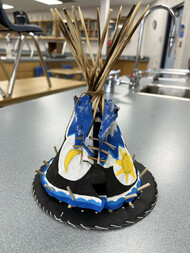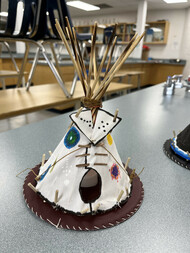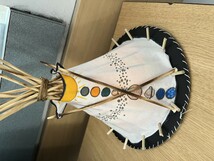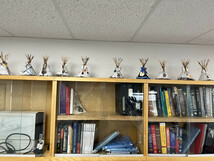Grade 9 Science Teacher Integrates Curriculum and Indigenous Ways of Knowing
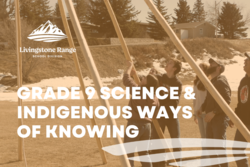
“I said yes, and then I panicked,” says Grade 9 Science teacher Ashtyn Duncan. She’s describing being approached about including Tipi Kits into her science space curriculum. “I wondered, ‘How will this work?’ but I decided to try it and things fell into place.”
Ashtyn teaches at Matthew Halton High School (MHHS) in Pincher Creek and says she has very little background in indigenous programming for students. But when her colleague Bonnie Whitford invited her to use the Tipi Kits provided by Actua (a leading Canadian science, technology, engineering, and mathematics education outreach organization) with her science class, Ashtyn decided to go ahead. With the assistance of local Knowledge Keeper and MHHS Educational Assistant Kyle Plain Eagle and Knowledge Keeper Jaron Weasel Bear, Ashtyn’s students embarked on a learning journey together.
To begin, Jaron and Kyle led the students in a traditional Blackfoot tipi-raising and taught the significance of east-facing door placement to face the rising sun and the top half of a tipi represents the sky while the bottom represents the earth.
“A day or two after the tipi-raising as we worked on our small models, one student was talking about the Big Dipper constellation,” says Ashtyn. “Another student reminded his classmate that the Blackfoot people see that as the Seven Brothers constellation. They were connecting Blackfoot understanding with the science, which was really neat to see.”
The 44 Grade 9 students spent several class periods constructing their model tipis after having participated in the proper tipi raising with Jaron and Kyle. The Actua Tipi Kits included a base, sticks, fabric, and sinew to sew the pieces together. One reluctant student who initially shied away from these experiences was given multiple re-engagement opportunities. He turned out to be the best sewer and eagerly wanted to help his classmates stitch all their bases together.
Another student noticed that the Actua kit instructions were somewhat different from the Blackfoot way they had learned and showed other students how to build their mini tipis in the traditional way.
Ashtyn shares that a couple of indigenous students who had been apathetic about school became fully engaged in the science-tipi project, connecting to their own family experiences and sharing meaningfully with their classmates.
“Sometimes you just do it and the connections come,” says Ashtyn. “I went about doing it and the students are sharing with each other, communicating, working together, and getting creative.”
Although painting and design on traditional tipis are reserved for particular people and settings, all students were encouraged to use both Blackfoot cultural understanding and western sky science to design their own mini tipis. Many students were excited to come in during study hall blocks to continue working on their tipis.
“It felt like a lot of work,” says Ashtyn. “But it was so worth it!”
The completed tipis now line the cupboard-tops in her classroom, a reminder that ‘Every student, every day’ can connect and learn.
